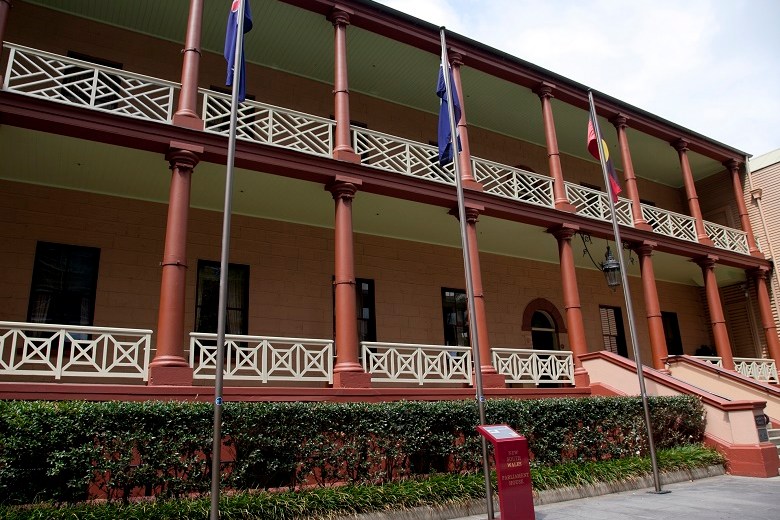
NSW Government refuses to release key reports into local government, claiming the documents are exempt under the state’s information law.
The State Government has been withholding the two Independent Pricing and Regulatory Tribunal (IPART) reports since 2016, despite repeated requests for their release from local government peaks and the Labor opposition.
IPART’s review into local government reporting and compliance burdens was handed to the government in April 2016 while its review of the state’s controversial rating system was provided to the minister in December that year.
Both reviews followed extensive public consultation and the release of draft reports and recommendations for further feedback.
Government News sought access to the two reports under the state’s Government Information (Public Access) Act 2009.
But the Department of Premier and Cabinet refused to release the reports, arguing they were exempt under the GIPA Act because they were “prepared for the dominant purpose of submission to Cabinet”.
Under the act, a document can be exempt on these grounds “whether or not the document is actually submitted to Cabinet.”
The DPC also refused access on the grounds that the reports do not “consist solely of factual information as they contain extensive discussion, opinion, analysis, assessment and recommendations.”
Government News appealed the DPC’s decision to the NSW Information and Privacy Commissioner, which ultimately upheld the department’s decision.
Sought-after reports
Both IPART reports are highly contentious in the state, given long-running concern around rate capping and cost shifting in NSW, as well as the compliance burden facing councils.

Responding to the department’s refusal to release the documents, the state’s local government peak body criticised the NSW Government for “trying to hide the IPART reports from public view.”
“These are publicly funded reports, they speak to the importance of making sure that local governments are financially sustainable, and they should have been released and enacted,” Local Government NSW president Linda Scott told Government News.
“On behalf of the state’s 128 councils, we continue to call on the NSW Government to release the IPART inquiries into red tape and the rating system, and immediately commence a conversation with local governments about adopting the recommendations to ensure councils are financially sustainable into the future,” Ms Scott said.
Leading local government expert Brian Dollery described the withholding of the reports as “secretive behaviour that has come to characterise NSW Government’s approach to local government,” pointing to the government’s continued refusal to release a key KPMG report into council mergers.

“The IPART process is meant to be transparent, and it was a transparent process right up until the final report,” said Professor Dollery, director of the Centre for Local Government at the University of New England.
Professor Dollery said the government’s response to Government News’s request did not offer “any reasonable basis for refusing to let you or anyone else see those reports.”
Stewart Todd, president of LG Professionals Australia, NSW, said the time the government has had to consider the IPART findings was “excessive” and it should now release the reports and its response to the recommendations.
While the government has made some moves to ease councils’ reporting and compliance burden, there were many other potential changes that had been identified by IPART, he said.
 “Our members are the ones dealing with this on the ground… if we can lift compliance and reporting burdens and give greater resources to deliver more services, then everyone wins,” he told Government News.
“Our members are the ones dealing with this on the ground… if we can lift compliance and reporting burdens and give greater resources to deliver more services, then everyone wins,” he told Government News.
Ms Scott pointed to IPART findings in 2012 showing councils had 120 regulatory functions involving over 300 separate regulatory roles, which emanated from 67 state acts administered by 31 state agencies.
Draft rating measures welcomed
Councils had welcomed the IPART rating review’s draft recommendations in August 2016, which advocated flexibility for local government in setting rates, and had called for their adoption, Ms Scott said.
“There is no silver bullet here, the IPART report however provides a path forward for discussion between state and local governments and communities to create a more financially sustainable future for local governments.
“With cost shifting, rate capping and billions of dollars in infrastructure backlog we cannot continue in the same way,” Ms Scott said.
Similarly, Mr Todd said that IPART’s draft recommendations appeared to have met their brief of devising an efficient and effective rating system.
“So if it’s ticking the boxes of the terms of references, why aren’t they releasing the report and why aren’t we enacting it, to let local government become more dynamic and customer focused,” he said.
The state’s councils were subject to cost shifting that had been in the order of $820 million in one year alone, Ms Scott added.
In August last year the NSW Labor Opposition used local government week to call on the State Government to release the two reports.
“These reports were prepared by IPART at great expense and after much public consultation. The public has a right to see them,” shadow minister for local government Peter Primrose said at the time.
Comment below to have your say on this story.
If you have a news story or tip-off, get in touch at editorial@governmentnews.com.au.
Sign up to the Government News newsletter.
Local Governments require a complete State and Territory review for inherent failure to appropriately manage infrastructure and communities in general.
All LGs receive billions from their rate base & Revenue points and annual funding from state and federal coffers based on a formula per community/area for infrastructure maintenance, road network maintenance, community development + millions more for projects, flood damage and other disasters. Why are we all experiencing ageing infrastructure and failure when this money has been paid to maintain and manage.
In Qld there are many failures reported and the Auditor General’s Reporting highlights constant mismanagement and failure. Councils have a higher than normal revolving door of employees at massive expense to locate and relocate and evidence shows that the arena is almost void of Position Descriptions of any consistency for high level managers where a medium level of management skills are required in small communities of under 15,000 people with the same pay scale being provided. In Cape York we have 11 Shire Councils + Weipa Town Authority … with 12 CEO’s, and 12 in each community for: Payroll, Community Development or Operation or Organisational Development, HR Managers, Works Managers, Engineers + a plethora of Engaged Consultants, Bio-Security, Animal Control etc managers all on the same pay scale whether they have 400 residents and a small area to manage or otherwise… Review needs to happen at Federal Level.